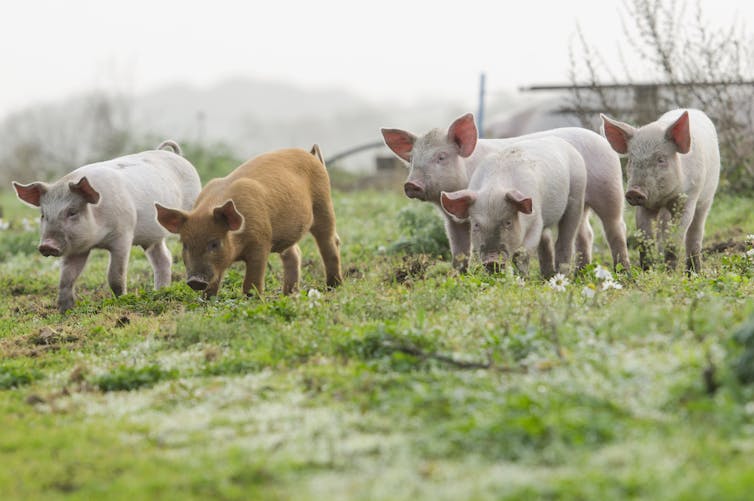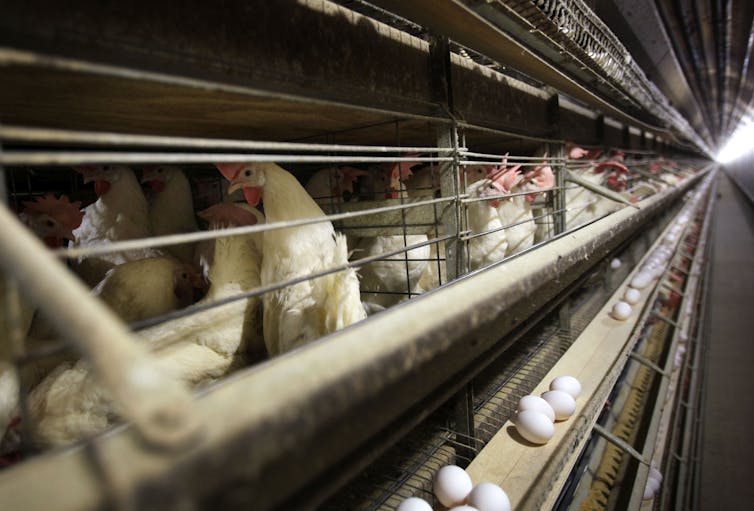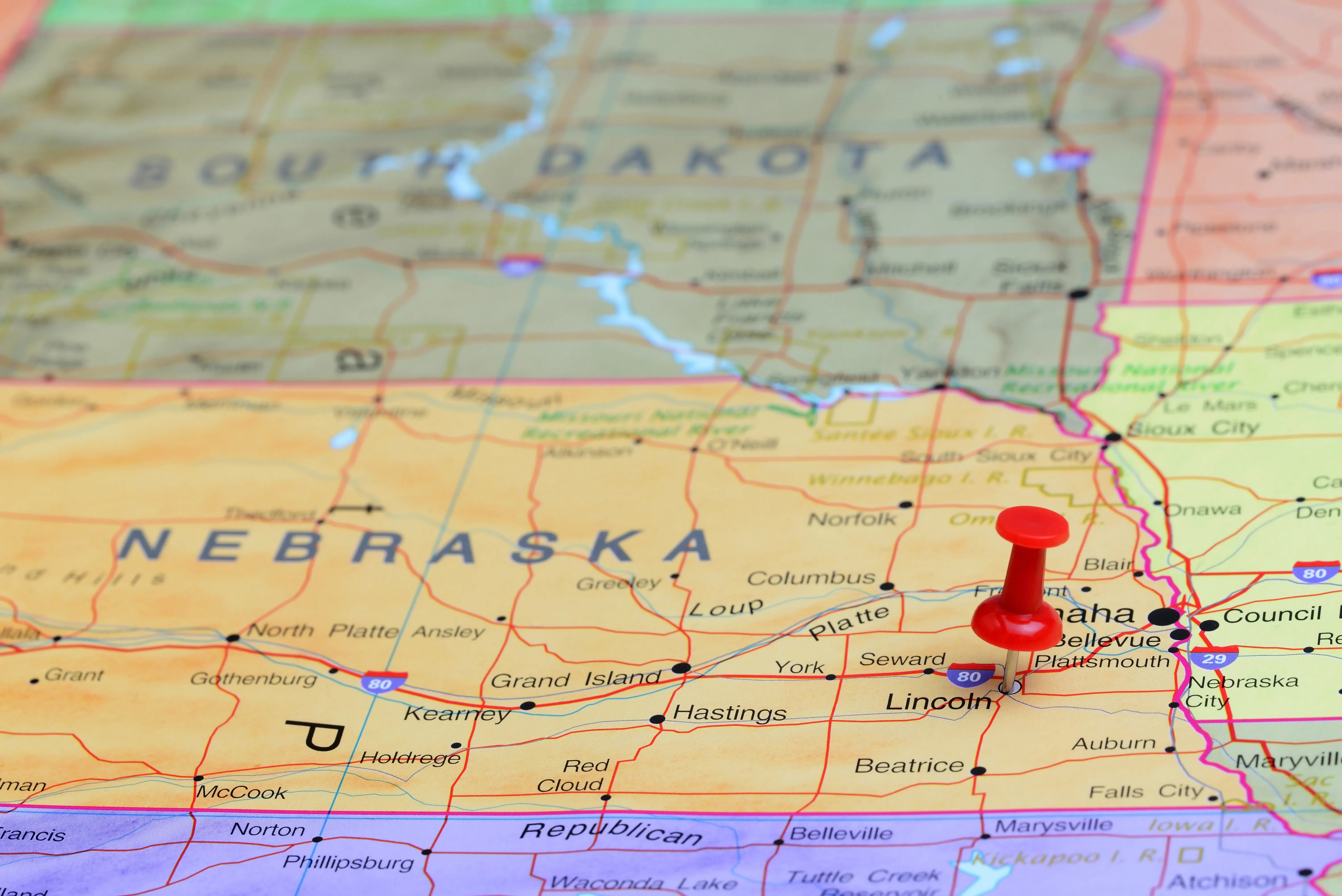
Supreme Court grapples with animal welfare in a challenge to a California law requiring pork to be humanely raised

David Favre, Michigan State University
Should Californians be able to require higher welfare standards for farm animals that are raised in other states if products from those animals are to be sold in California? The U.S. Supreme Court will confront that question when it hears oral argument in National Pork Producers Council v. Ross on Oct. 11, 2022.
Pork producers are challenging a law that California voters adopted in 2018 via ballot initiative with over 63% approval. It set new conditions for raising hogs, veal calves and egg-laying chickens, whose meat or eggs are sold in California. The state represents about 15% of the U.S. pork market.
At most commercial hog farms, pregnant sows are kept in “gestation crates” that measure 2 feet by 7 feet – enough room for the animals to sit, stand and lie down, but not enough to turn around. California’s law requires that each sow must have at least 24 square feet of floor space – nearly double the amount that most now get. It does not require farmers to raise free-range pigs, just to provide more square feet when they keep hogs in buildings.
The National Pork Producers Council argues that this requirement imposes heavy compliance costs on farmers across the U.S., since large hog farms may house thousands of sows and that it restricts interstate commerce. The Constitution’s commerce clause delegates authority to regulate interstate commerce to the federal government. In a series of cases over the past 50 years, the Supreme Court has made clear that it will strike down any state law that seeks to control commerce in another state or give preference to in-state commerce.
Farmers and animal welfare advocates understand that if California wins, states with the most progressive animal welfare policies – primarily West Coast and Northeast states – will be able to effectively set national standards for the well-being of many agricultural animals, including chickens, dairy and cattle. Conceivably, California might also be able to require basic conditions for human labor, such as minimum wage standards, associated with products sold in California.
Nine other states have already adopted laws requiring pork producers to phase out gestation crates. Massachusetts’s law would also apply to retail sales of pork raised elsewhere, like California’s, but its enforcement is on hold pending the Supreme Court’s ruling in the California case.
States control farm animal welfare
The main federal law that regulates living conditions for animals is the Animal Welfare Act, which was signed into law in 1966. Among other things, it requires the Department of Agriculture to adopt humane regulations for the keeping of animals that are exhibited in zoos and circuses or sold as pets. However, farm animals are explicitly exempted from the definition of “animal.”
While the federal government is mute on farm animal welfare, each state clearly has the power to regulate this issue within its borders. For example, in recent years, nine states have outlawed housing egg-laying chickens in “battery cages” that have been the industry standard for decades. These wire enclosures are so small that the birds cannot spread their wings.
Since many states still permit battery cages, egg-laying chickens’ quality of life depends on the state in which they reside.

It is also clear that the state of California has no power to adopt laws that are binding on the farmers of other states. This case falls between those two points – here’s how:
California’s market power
The California law says that if producers want to sell pork in California, they must raise pigs under conditions that comply with the state’s regulations. Farmers do not have to meet these standards unless they want to sell in California. The same requirement is applied to producers located in California and those based elsewhere, so the law does not directly discriminate between states in a way that would constitute a clear commerce clause violation.
Producers of eggs and veal who sell in California are on track to implement new space requirements for their animals under the law. In my view, however, much of the pork industry appears to be in denial. Instead of working out how to comply, the National Pork Producers Council wants the courts to set the California law aside.
Even as this case moves forward, however, major producers including Hormel and Tyson have said they will be able to comply with the California standard. Niman Ranch, a network of family farmers and ranchers who raise livestock humanely and sustainably, has filed an amicus brief with the Supreme Court supporting California.
Admittedly, pork farmers have invested millions of dollars in their existing facilities, and the system efficiently produces huge quantities of cheap pork. But Californians have taken the position that this output comes at an ethically unacceptable cost to animals in the system.
Weighing ethics against compliance costs
In considering this case, the Supreme Court will confront two questions. First, does California’s requirement constitute a burden on interstate commerce? A U.S. District Court in California held that the answer was no, and the U.S. 9th Circuit Court of Appeals affirmed this ruling.
There is no magical formula for what constitutes a burden on interstate commerce, so it is impossible to know in advance what the Supreme Court will say about this point of the case. The present court has not addressed this issue.
If the court should decide that the California law does restrict interstate commerce, it then must consider whether the measure meets the “Pike test,” which was set forth in the 1970 ruling Pike v. Bruce Church, Inc.. In this case, the court held that a state law that “regulates even-handedly” must be upheld unless the burden that the law imposes on interstate commerce “is clearly excessive in relation to the putative local benefits.” Put another way, is Californians’ social interest in better welfare for pigs substantially outweighed by the economic cost to producers?
In another 2010 ruling, United States v. Stevens, the court acknowledged that “the prohibition of animal cruelty itself has a long history in American law, starting with the early settlement of the Colonies.” However, the court concluded that depictions of animal cruelty – the plaintiff had been convicted for producing and distributing dogfighting videos – qualified as protected speech under the First Amendment and that this protection outweighed society’s interest in promoting animal welfare.
Is a national standard in the cards?
Many animal welfare questions involve striking this kind of balance between ethical positions and economic consequences in a political context. It is like mixing oil and water, which makes predictions difficult.
The biggest unknown is what views the newest Supreme Court justices will bring to this case. Only four current justices – John Roberts, Clarence Thomas, Samuel Alito and Sonia Sotomayor – were members of the court when it ruled on the Stevens case in 2010. Will today’s court support California’s right to regulate products sold within its borders, or meat corporations’ economic arguments? How many justices will see farm animal welfare as an important public concern?
I expect that the court will uphold the California law – and that if this happens, within five years livestock producers will be proposing national legislation setting uniform welfare standards for farm animals. It is impossible to predict now whether a national law would improve animal welfare or adopt existing poor welfare practices.![]()
David Favre, Professor of Law at Michigan State University College of Law, Michigan State University
This article is republished from The Conversation under a Creative Commons license. Read the original article.

















